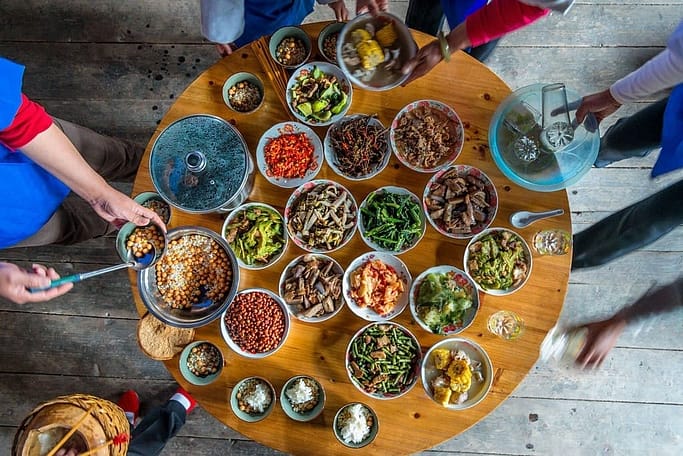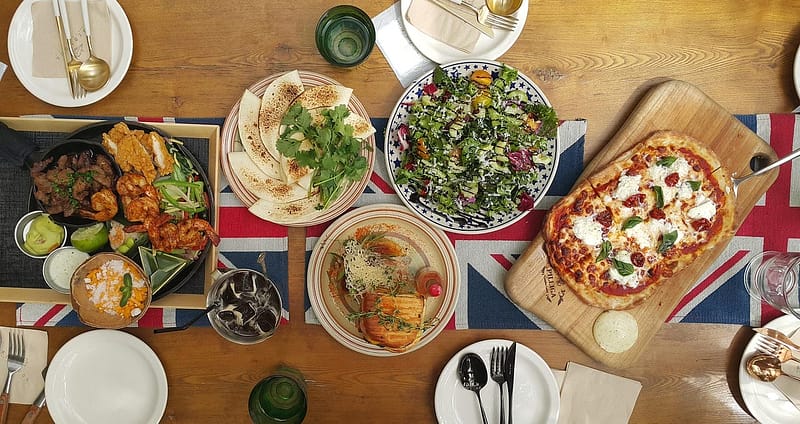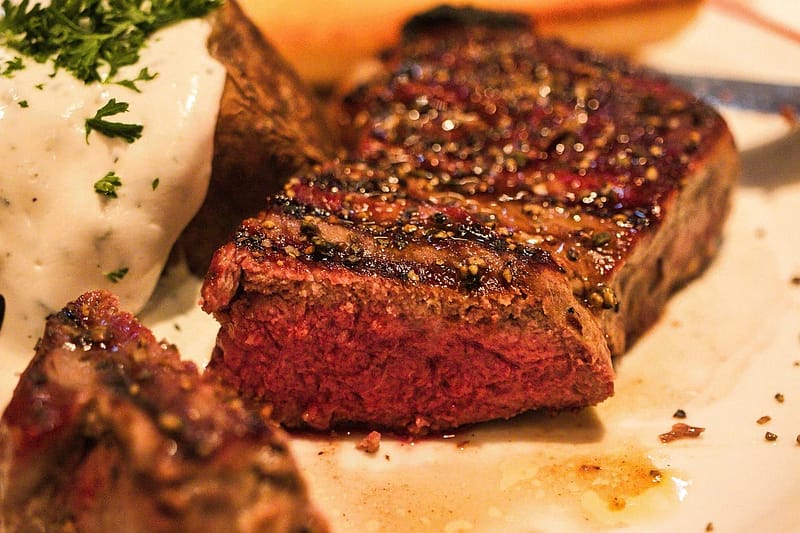Australia’s food scene has always been dynamic, but what’s landing on our plates in 2026 is particularly exciting. From ancient native ingredients getting their well-deserved moment to nostalgic comfort foods making a comeback, the trends shaping our tables this year reflect a deeper connection to health, sustainability, and cultural identity. Whether you’re a home cook wanting to stay ahead of the curve or simply curious about what’s driving the buzz at your local café, here’s what’s genuinely hot in Australian food right now.
Native Australian Ingredients Take Centre Stage
One of the most thrilling developments in Australian food culture is the growing appreciation for native ingredients that have sustained Aboriginal and Torres Strait Islander peoples for over 60,000 years. Bush tomato, wattle seed, finger lime, and lemon myrtle are no longer confined to specialty restaurants they’re becoming mainstream.
These ingredients bring unique flavour profiles that you simply can’t find anywhere else. Bush tomato offers an intense, sun-dried tomato taste with caramel and tamarind notes, while wattle seed delivers nutty, coffee-like undertones with hints of chocolate. Finger lime, with its caviar-like texture and bold citrus punch, has become a favourite in cocktails and seafood dishes.
What makes this trend particularly meaningful is its connection to sustainability and cultural respect. Many producers partner with Aboriginal communities who use traditional land care practices, ensuring these ingredients are ethically sourced and sustainably harvested. Premium food segments featuring native Australian flavours are growing by 35 per cent annually, showing that Australians are genuinely embracing these distinctive tastes.
The Fermented Food Revolution Continues
Your gut will thank you for this trend. Fermented foods like sauerkraut, kimchi, and miso are experiencing massive popularity as Australians become increasingly aware of the gut-brain connection and the role digestive health plays in overall wellbeing.
Research from the University of California, Davis, found that sauerkraut helps maintain intestinal cell integrity better than raw cabbage, offering real protective benefits for gut health. The fermentation process creates beneficial metabolites—including lactic acid and specific amino acids—that support your microbiome and may strengthen your immune system.
Australian restaurants and home cooks are getting creative with fermentation, moving beyond traditional applications. You’ll find miso moving beyond Japanese cuisine into fusion dishes, while kombucha regulations in Australia ensure quality standards for the booming market. The beauty of fermented foods is that even small amounts can make a difference—you don’t need to consume massive quantities to see benefits.
If you’re new to fermented foods, start gradually with milder options like carrot sticks or cucumber, and always eat them with a full meal rather than on an empty stomach. This gives your digestive system time to adjust to the influx of beneficial bacteria.
Plant-Based Evolution: Beyond Just Burgers
The plant-based movement in Australia has matured significantly. Rather than simply replicating meat, the focus in 2026 is on celebrating whole plant ingredients in their own right.
Australians are increasingly embracing flexitarian lifestyles, with 42 per cent eating less meat or none at all. The meat substitute market is projected to reach around 98 million dollars by 2026, but what’s more interesting is how the products are evolving. Instead of processed faux meats, restaurants are showcasing jackfruit, mushrooms, and legumes prepared in ways that highlight their natural textures and flavours.
Plant-based seafood alternatives made from seaweed and konjac are gaining traction, while high-quality plant proteins derived from peas, soy, and lentils are appearing in everything from ready-to-drink shakes to protein-fortified snacks. Australian companies like V2Food and Fable Food are leading the charge, creating products that appeal to meat-lovers and vegetarians alike.
What’s driving this shift isn’t just environmental consciousness—though sustainability remains important—but also health priorities. Consumers are seeking products with high protein, fibre content, and real, recognisable ingredients.
The Protein Obsession Reaches New Heights
Speaking of protein, Australians have developed quite the hunger for it. The high-protein food market in Australia is experiencing rapid growth, valued at approximately 2.1 billion dollars in 2024 and projected to reach 4.4 billion dollars by 2033.
This trend extends far beyond gym-goers and athletes. While they remain significant consumers, everyday Australians are incorporating high-protein foods into their daily meals for improved energy levels, weight management, and overall wellbeing. The protein-enriched flavoured milk category alone has grown 88 per cent in the past three years.
You’ll find protein showing up in unexpected places high-protein ice cream, oatmeal, and even snack bars featuring cottage cheese, which has made a surprising comeback thanks to viral TikTok recipes. Greek yogurt fortified with vitamin D and protein-rich chia sesame snaps are among the products winning consumer approval.
The shift reflects a broader move away from highly processed foods toward more nutrient-dense options, with consumers showing strong preference for products claiming high protein (36 per cent), no added sugar (37 per cent), and gut health support (20 per cent).
Fibre Gets Its Moment in the Spotlight
While protein has been grabbing headlines, fibre is quietly becoming a star player in Australian nutrition trends. Products fortified with fibre—including breads, pastas, and prebiotic plant-based meals—are becoming increasingly common as consumers prioritise digestive health.
The renewed interest in fibre makes sense when you consider that most Australians don’t consume the recommended 25 to 30 grams daily. Health conditions linked to low-fibre diets include constipation, irritable bowel syndrome, heart disease, type 2 diabetes, and certain cancers.
Incorporating more fibre doesn’t require dramatic diet overhauls. Simple swaps like choosing wholemeal bread over white, adding an extra vegetable to dinner, or snacking on fruit and nuts instead of biscuits can significantly increase your intake. Foods naturally high in fibre like oats, barley, beans, lentils, and fresh produce are experiencing renewed appreciation.
Prebiotic fibres found in certain cereals, underripe bananas, and cooked-then-cooled potatoes are particularly valuable because they selectively feed beneficial gut bacteria, delivering specific health benefits.
Beef Tallow Makes a Nostalgic Return
In a surprising throwback to traditional cooking methods, beef tallow is experiencing a major comeback. Whole Foods Market named it one of the top food trends for 2026, noting that both home cooks and professional chefs are rediscovering its versatility.
Tallow’s appeal lies in its high smoke point and rich flavour, making it ideal for frying and roasting. Australian restaurants are using it to elevate everything from chips to pastries, while at home, cooks appreciate its performance with high-heat cooking methods.
This trend also connects to the ‘nose-to-tail’ movement, which emphasises sustainability by utilising entire animals rather than discarding parts. By rendering beef fat that might otherwise go to waste, tallow represents a meaningful approach to reducing food waste while delivering exceptional flavour.
Sydney restaurants like the 203 and Bistecca are featuring tallow-fried chips and using flickering tallow candles that invite diners to drag focaccia through the drippings. Australian brands are even producing tallow sprays and specialty products for home use.
Nostalgic Comfort Foods Provide Emotional Connection
During the ongoing cost-of-living pressures, Australians are reaching for foods that provide emotional comfort and connection to simpler times. Nostalgic flavours aren’t just a passing trend—they’re reshaping how food companies develop products and connect with consumers.
Research shows that familiar, comforting flavours can increase customer loyalty and repeat purchases by 40 per cent. When we eat something that triggers positive memories, we’re not just buying a product—we’re buying an emotional experience.
Retro home-cooked meals are making a comeback. Think Chicken Kievs, fondue nights, and even old-fashioned cuts like liver and offal. Classic products like Toobs, tomato sauce-flavoured chips, and iconic chocolate bars are being reintroduced or celebrated in special campaigns.
Importantly, nostalgia isn’t limited to one generation. While older Australians might crave Kraft cheese and olives, younger consumers seek Dun Aroos or Pop Rocks. Food developers are learning to create products that honour nostalgic feelings while maintaining relevance through innovation, balancing tradition with modern expectations.
Asian Fusion Flavours Dominate the Scene
Asian-inspired food and drink now account for 28 per cent of online share of voice in Australia, with Japanese matcha, Korean bakery staples, and Southeast Asian flavours moving from niche indulgences to everyday favourites.
The pistachio matcha latte has become a genuine phenomenon, with TikTok views more than doubling in eight months. Australian cafés in Melbourne and Sydney are struggling to keep matcha in stock, while pistachio-flavoured products—from gelato to spreads—are expanding rapidly in supermarkets like Woolworths and Coles.
Korean salt bread has exploded in popularity, with dedicated bakeries like Buttered in Sydney’s Chippendale drawing queues for their signature pastries. The craze demonstrates how global food trends can find instant resonance in Australia, particularly when they combine novelty with comforting carb satisfaction.
Crema lattes—cream-topped, dessert-style coffee drinks have seen TikTok mentions soar by 63 per cent. These drinks deliver texture, presentation, and shareability, proving that in modern café culture, presentation has become as important as flavour.
Sustainability Moves from Buzzword to Standard Practice
Sustainability is no longer just good marketing it’s become an expectation. Australians are increasingly conscious about where their food comes from, driving demand for ethically sourced ingredients, locally grown produce, and sustainable seafood.
Australia has committed to halving food waste by 2030, with states implementing mandatory organic recycling for businesses. Restaurants are responding with creative approaches including nose-to-tail cooking, root-to-leaf dining, and comprehensive waste reduction programs.
Forward-thinking venues are embracing zero-waste kitchens, transparent supply chains that highlight farm origins, and sustainable fit outs using recycled materials. The NSW Environmental Protection Authority’s Love Food Hate Waste program reports that participating businesses cut waste by an average of 21 per cent.
This sustainability focus extends to packaging choices, with brands adopting bold, artistic designs while ensuring materials are recyclable. The emphasis on female farmers is also gaining attention, particularly as 2026 marks the United Nations’ International Year of the Woman Farmer.
Experiential Dining Takes Centre Stage
Australians increasingly want more than just a meal they want an immersive experience that creates lasting memories. Modern diners, particularly Millennials and Gen Z, crave unique, shareable, and engaging dining experiences.
Multi-sensory dining experiences that incorporate theatrical elements, architectural projection mapping, and immersive storytelling are captivating Australian audiences. Restaurants like Dinner by Heston in Melbourne offer theatrical presentations of historic dishes recreated with modern techniques, while Dans le Noir? in Sydney and Melbourne heightens taste and smell by removing sight entirely.
Open kitchens, tableside theatrics, and chef’s table experiences allow diners to connect with the artistry behind every plate. The Grounds of Alexandria in Sydney has created a fully immersive venue with gardens, bakeries, and themed seasonal pop-ups.
Hyper-local sourcing is part of this experiential approach, with venues like Brae in Birregurra growing much of their produce on-site and sharing the story behind each ingredient. Menus based on micro-seasons, native ingredients, and regional producers create authentic connections that resonate with diners seeking genuine experiences.
Tourism Research Australia reports that food and drink now sit in the top three reasons Australians book domestic trips, driving waitlists at regional restaurants and cellar doors in areas like Daylesford, Mudgee, and Margaret River.
What This Means for Your Kitchen
The food trends shaping Australia in 2026 reflect deeper shifts in how we think about nourishment, sustainability, and connection. Whether you’re inspired to try cooking with wattle seed, experiment with fermenting vegetables, or simply swap to wholemeal bread for extra fibre, these trends offer accessible entry points for everyone.
The beauty of these movements is that they’re not about perfection or complete diet overhauls. Small, mindful choices—buying from local producers, trying native ingredients, incorporating more plant-based meals—can align your eating habits with these broader cultural shifts while supporting your health and wellbeing.
As Australians continue embracing foods that honour tradition, prioritise gut health, and reduce environmental impact, our collective food culture becomes richer and more connected to the land and communities around us. That’s something worth celebrating at every meal.
What food trend are you most excited to try? Whether it’s exploring the tangy complexity of fermented foods or rediscovering the nostalgic comfort of traditional recipes, Australia’s 2026 food landscape offers something delicious for everyone.
- Creative Ways to Use Native Australian Ingredients - November 18, 2025
- Exploring Plant-Based Dining: Recipes and Tips - November 18, 2025
- Food Trends in Australia: What’s Popular in 2026? - November 17, 2025










